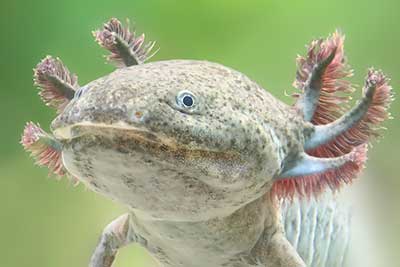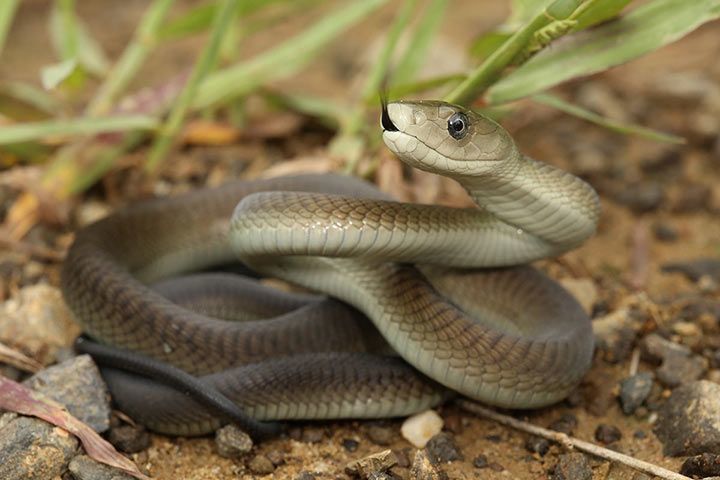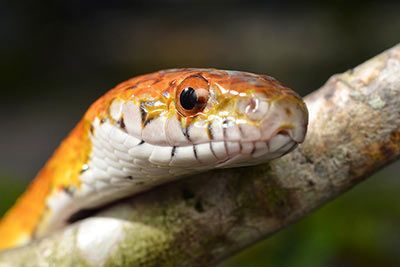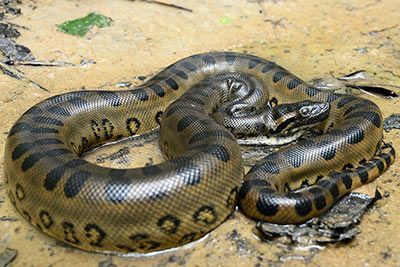Chameleon
Chameleon Facts
| Size | 0.9-24 in (2.5-60 cm) |
| Speed | Unknown |
| Weight | 3.5 oz to 4.4 lb (100-2,000 g) |
| Lifespan | 4-8 years |
| Food | Insects |
| Predators | Snakes, birds |
| Habitat | Africa, India, Mediterranean Sea |
| Class | Reptiles |
| Order | Scaled reptiles |
| Suborder | Iguania |
| Family | Chamaeleonidae |
| Scientific name | Chamaeleonidae |
| Characteristics | Grasping tail, long tongue, changes its color |
Main Characteristics
Chameleons are reptiles. They are closely related to iguanas. They have a prehensile tail, a long tongue and the ability to move their eyes independently and change the color of their skin.
Species
There are more than 200 species of chameleons. They can look very different. Some wear a "helmet" or "horns," while others have a long nose, or none at all.
The Smallest Chameleon
The smallest chameleon is called Brookesia nana. It is 0.85 inch (21.6 mm) long. It is also the smallest reptile in the world.
The Largest Chameleon
The largest are the Malagasy giant chameleon and the Parson's chameleon. They grow up to 27 inch (68.5 cm) long.

Habitat
Most chameleons live in Africa. Their prefer bushes, trees and the foliage and herb layer.
Anatomy and Appearance
Eyes
Chameleons can move their eyes independently of each other. This enables them to detect enemies much faster and to look out for prey more effectively.
Tongue
Chameleons like to stick out their tongue ... only to catch insects of course. When the chameleon has focused on an insect it lets its tongue shoot out like a rubber band. It accelerates to 96 km/h in a hundredth of a second. The insect sticks to it and is being caught like a fish on a fishing line. The tongue of the chameleon can be 1.5 to 2 times as long as its body.
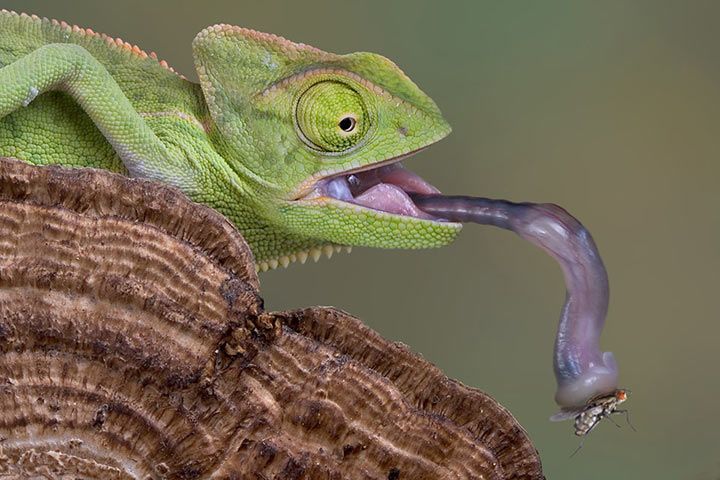
Senses and Abilities
How Does the Chameleon Change Its Colors?
Chameleons have specific cells layers which are located under their transparent outer skin. The upper layers contain the cells for yellow and red. The cells in the lower layers reflect the blue color components in the sunlight. They can be enlarged and minimized. So if a chameleon is more red in color, then it enlarges the red cells.
Why Does the Chameleon Change Its Color?
Even nowadays people claim that chameleons take on the color of their environment for camouflage. Of course this makes it more difficult for their enemies to detect a green chameleon on a green leaf. But the color entirely depends on their mood. If they are angry, they may change their color to black. Chameleons in love take on the brightest colors to impress the ladies. You can also recognize a sick chameleon – the color of its skin is rather pale.

Behavior
How Do Chameleons Move?
If you watch a chameleon, you will notice that it moves forward rather jerkily or in a swaying manner. It wants to imitate a leaf in the wind.
Enemies and Threats
Do Chameleons Have Enemies?
Adult chameleons have snakes and birds as enemies. Ants love to eat their eggs and young. In the wild, the animals live two to three years.
What Do Chameleons Do When Feeling Threatened?
Chameleons pretend to be dead when in danger. They freeze and simply let themselves fall to the ground when touched by an enemy. They only get moving again when they feel safe.
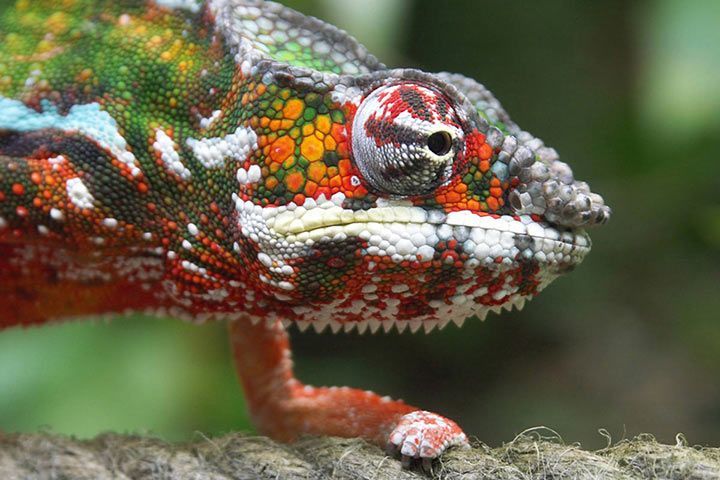
- Find Out More:
- How Chameleons Change Their Colors
- Amazing Facts About Animal Tongues
- Bearded Dragon Facts
- Frilled Lizard Facts
- Iguana Facts
- Komodo Dragon Facts
- Texas Horned Lizard Facts
- Watch Now on animalfunfacts.net:
 Animal Camouflage
Animal Camouflage Animal Colors and Patterns
Animal Colors and Patterns







